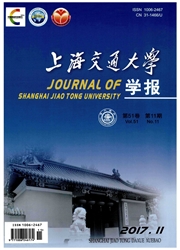

 中文摘要:
中文摘要:
以空间飞行器太阳电池翼在轨运行期间的温度变化规律为对象,采用有限元软件I-DEASTMG建立电池翼的热性能分析模型,针对电池翼满负荷(100%发电)和半负荷(50%发电)2种工况进行在轨热流和温度场计算.计算中,将电池翼基板处理为正交各向异性材料,采用等效热阻法推导基板在不同方向的等效导热系数.结果表明,当飞行器在轨绕地球飞行第5个周期后,太阳电池翼温度场呈现出周期性变化特征;与满负荷工况相比,半负荷工况下电池翼表面温度的变化范围较大;电池翼从阳光区进入阴影区时,其厚度方向的瞬态温差及其随时间的变化率达到最大值,且在半负荷工况下,电池翼沿厚度方向的最大瞬态温差及其随时间的变化率均大于满负荷工况.
 英文摘要:
英文摘要:
To investigate temperature distributions of solar panels in orbit under two operating conditions (full and half load), a thermal model was established by FEM analysis software I-DEAS TMG. The substrate of solar panels, which is composed of several composite materials, could be treated as an orthotropic plate, and the equivalent thermal resistance method is employed to derive the equivalent thermal conductivity of solar panels. The simulation results indicate that the temperatures of solar panels change periodically after five circles around the earth, and the range of temperatures under half load operating condition is wider than that under full load operating condition. Additionally, both the temperature difference through the thickness of solar panels and its first time derivative are highest when solar panels enter the eclipse, and these two values of half load operating condition are higher compared with those of full load operating condition.
 同期刊论文项目
同期刊论文项目
 同项目期刊论文
同项目期刊论文
 Enhancement of separation efficiency on continuous magnetophoresis by utilizing L/T-shaped microchan
Enhancement of separation efficiency on continuous magnetophoresis by utilizing L/T-shaped microchan Characterization on the performance of a fractal-shaped microchannel network for microelectronic coo
Characterization on the performance of a fractal-shaped microchannel network for microelectronic coo Numerical modeling for solid-liquid phase change phenomena in porous media: shell-and-tube type late
Numerical modeling for solid-liquid phase change phenomena in porous media: shell-and-tube type late 期刊信息
期刊信息
